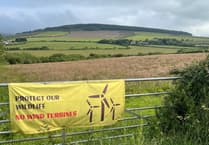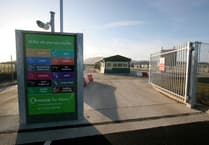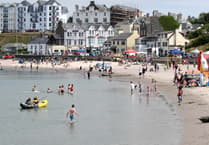A number of potential sites for wind farms in the island have already been identified by the government.
The government announced last week that more of the island’s electricity is going to be created by wind and solar power.
Work has now started on a programme to decarbonise the Isle of Man’s electricity supply by 2030.
Manx Utilities has received approval from the Council of Ministers for its plans to begin construction projects, which will see up to 30 megawatts of electricity produced from onshore wind and solar energy by 2026.
A report from AEA Technology on the impacts and opportunities from renewable energy sustainability for the Isle of Man identifies eight possible locations for onshore wind farms. These are Ballacooiley in Ballaugh, Beary mountain, Dalby mountain, Gordon in Patrick, Keppel Gate, Snuff the Wind (which is above Foxdale), Jurby, and a site it simply refers to as The Cronk.
The report, which was completed for the Department of Environment, Food and Agriculture in 2010, suggested that the possible size, and hence the generation capacity, of an onshore wind farm will depend on a number of factors.
These include wind speeds, environmental impact, the impact on residential areas (including noise and visual issues), grid connection capacity, availability of economically viable resource, telecommunication links, and radar installations.
Onshore wind farms can be heavily constrained by these and they can often significantly reduce the proportion of a potential development site or size of development.
Chair of Manx Utilities Tim Johnston MHK said: ‘Subject to planning approvals, wind turbines could be built on publicly-owned sites focusing on areas where the wind yield is likely to be highest.’
Of the eight sites identified in the report, three are government-owned.
These are Snuff the Wind, Keppel Gate, and Jurby.
Keppel Gate has the highest wind speed of these sites, with a speed of nine metres per second, as calculated in 2010.
Meanwhile, Snuff the Wind has a speed of 7.5 m/sec and Jurby has seven m/sec.
All three have the same capacity of 10 megawatts.
Under accessibility and comments, Keppel Gate is described as ‘upland exposed areas’ and in close proximity to the road but only from the south from Douglas.
It’s concluded that the road network to the north of it is unsuitable for construction traffic. Snuff the Wind is a ‘small plateau area in the uplands’ and has ‘good access’ as it’s close to the road.
Jurby is described as an ‘old airfield in west of the island in open, exposed position’ and has ‘good access’.
The assumption of capital expenditure, including underground cable connection, for each is £15.13 million for Keppel Gate – the most expensive – and £14.65m and £14.36m for Snuff the Wind and Jurby respectively.
In some areas the development of wind farms is extremely difficult, the report says.
Onshore wind farms can vary greatly in size. There are many small community and industrial developments of the order of a few megawatts up to tens of megawatts, as well as single turbine developments.
There are even very large scale developments of over 100MW and more.
At the outset of wind farm development, turbines were rated below 0.5MW. However, turbine ratings have increased over the last 20 years such that onshore turbines can have ratings as high as 3.6MW.
For onshore developments the average rating for installed turbines is now greater than 1MW.
‘Currently, electricity demand in the Isle of Man averages at around 40 megawatts and peaks at about 75 megawatts in winter, but can fall to as low as 25 megawatts at night during the summer,’ says Mr Johnston.
‘With the help of independent specialist consultants, Manx Utilities has undertaken detailed work to determine the best approach to increasing the island’s use of renewable energy whilst not compromising supply security and the needs of its customers.’
For solar panels, sites in public ownership are being targeted for installing solar panels, which will involve the use of car parks and government buildings, Mr Johnston has said.
In Professor James Curran’s climate action report submitted to the government in 2019, he explains that as a technology, solar photovoltaic has become exponentially more economic due to large-scale developments throughout the world.
‘The levelised cost of energy is competitive and the MUA offer attractive feed-in-tariff rates for domestic and commercial installations, making it a viable opportunity for businesses and households to adopt the technology,’ he said.
‘However, installations above 50 kW face prohibitive “reserve-demand-charges” that are currently a barrier to large businesses with significant scope for installations on rooftops or marginal land (unsuitable for other uses) to generate electricity.
‘In terms of utility scale (MW) installations, the scope for solar to generate significant amounts of energy during high demand periods (winter evenings) is limited on the Isle of Man, even with storage.
‘The technology may nonetheless provide generation benefits if deployed in areas with a low opportunity-cost (e.g. reservoirs, industrial and government rooftops, unused airfield space), alleviating generation demand from other assets during day-light hours in summer.’
The government says it doesn’t currently have a projected cost for the project. A spokesperson added: ‘Manx Utilities will work with Treasury to establish the most appropriate funding solution.’
Both reports can be found on the Net Zero Isle of Man website under ‘impact report’ and ‘appendix 14: onshore wind and solar generation’.




